How Did Sea Travel Change European Nations In The 17th Century?
| Colonial America Pre-Revolutionary War Revolutionary War Civil State of war | World War I Earth War Two Cold War I | Korean War Vietnam War U.Southward. Presidents |
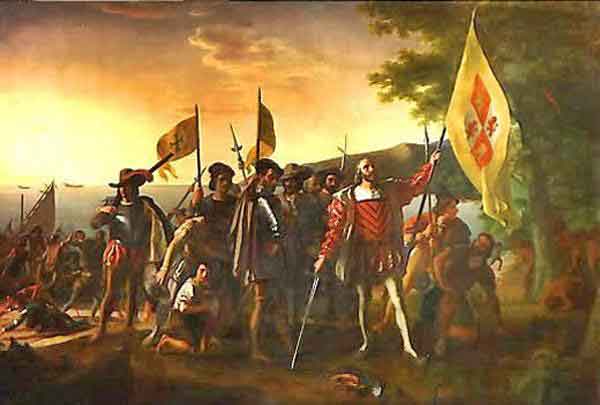 The Usa has been labeled as a immature nation, given its actual outset in the yr 1776, when the Declaration of Independence was proclaimed. In reality, the journey these United States take been going through begins before 1776.
The Usa has been labeled as a immature nation, given its actual outset in the yr 1776, when the Declaration of Independence was proclaimed. In reality, the journey these United States take been going through begins before 1776.
Native Americans were the first inhabitants of this rich state. They are believed to take come over from the Eurasian continent past manner of the area we know today as Alaska and Canada.
It is easy to follow the chronological timeline of the The states. Its history often begins with Leif Ericson, who is believed to have travelled to this state in the year one thousand. Then past Christopher Columbus in 1492, the pilgrims in the 16th century, later followed past other European nations such as Espana, Portugal, and Great britain.
As we fast-forward through the years, the function of this young nation is evident in every part of the world. There is not one part of the world that has not been touched past the influence of the Us.
Brief Overview
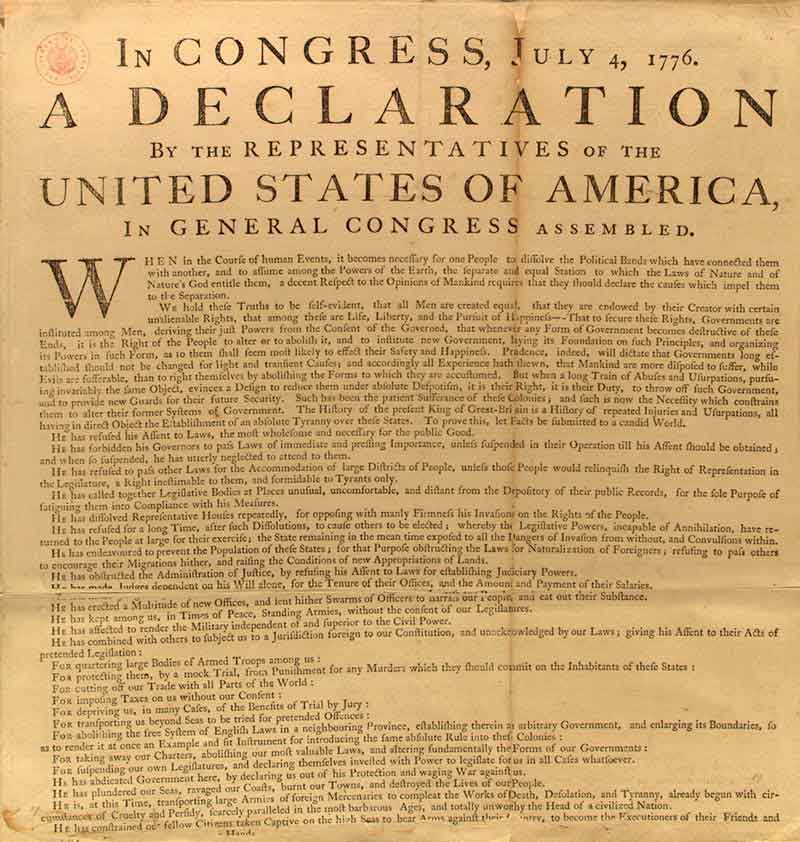 The story of the U.s.a. begins with the thirteen colonies which by the tardily 18th century had 2.5 million people. In its struggle towards independence, the Declaration of Independence led to the American Revolution in 1776. Betwixt the Revolution against U.k. and the American Ceremonious War in 1861, the young nation went through a myriad of storms, politically and socially, in addition to the meaning progress it went through. Slavery of Africans was already an issue early in those days, which perhaps contributed to the formation of the Amalgamated States of America, leading to the Civil State of war. Every bit the war broke out, lines were fatigued on the sands of these United states of america.
The story of the U.s.a. begins with the thirteen colonies which by the tardily 18th century had 2.5 million people. In its struggle towards independence, the Declaration of Independence led to the American Revolution in 1776. Betwixt the Revolution against U.k. and the American Ceremonious War in 1861, the young nation went through a myriad of storms, politically and socially, in addition to the meaning progress it went through. Slavery of Africans was already an issue early in those days, which perhaps contributed to the formation of the Amalgamated States of America, leading to the Civil State of war. Every bit the war broke out, lines were fatigued on the sands of these United states of america.
The Ceremonious State of war was followed by the reconstruction era in which a change in the overall atmosphere brought in a change that comes with growth. Slavery ended, states that bankrupt off from the union were readmitted, and the national government grew stronger. All 48 contiguous states had been admitted in 1912, Alaska and Hawaii were added later in the mid 20th century.
Between the 1890s through the 1920s, the progressives ushered in a unlike tone. People were getting tired with the abuse, waste, and the practice of old politics. The movement saw the advancement of women's suffrage and the prohibition of alcohol added to the constitution.
When World War I bankrupt out in 1914, the United States had maintained its neutrality under Woodrow Wilson. Wilson tried to go on the U.South. out of the state of war, but then in 1917 relented and alleged war against Germany.
The Wall Street Crash of 1929 came later a decade of prosperous living, the years that followed marked a world wide Not bad Depression that lasted for ten years. Franklin Delano Roosevelt (FDR) and other politicians presented the people a class of relief in what was chosen the New Bargain. This brought in various types of programs that included relief, recovery, and reform. Unfortunately, all this did was realign the political landscape that produced the Autonomous Party, big political machines in the major cities, so-chosen intellectuals, and the white due south.
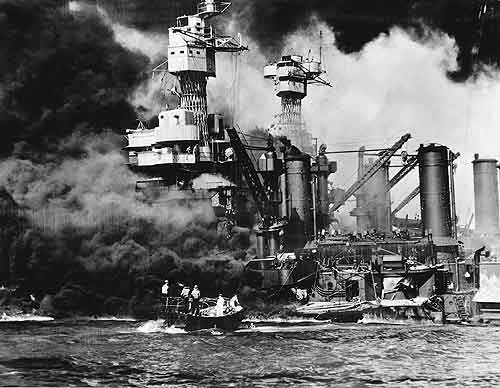 December 8, 1941, "A day that will live in infamy…" These words spoken by FDR marked the entry of the Us into its Second World War in less than 25 years. The Japanese attack of Pearl Harbor on that date led to the first use of the atomic bomb. This too marked the defeat of Nazi Germany under the Allied Forces.
December 8, 1941, "A day that will live in infamy…" These words spoken by FDR marked the entry of the Us into its Second World War in less than 25 years. The Japanese attack of Pearl Harbor on that date led to the first use of the atomic bomb. This too marked the defeat of Nazi Germany under the Allied Forces.
The Cold War was built-in immediately later Earth War 2. Even though at that place was a brief period of residuum for the Usa during those years post-obit Globe War Ii, by 1950, the The states constitute itself embroiled in the Korean War, 1959 saw the total interest of the U.s. in the Vietnam War. Both wars have been described every bit "proxy wars" wherein a third party is used in a state of war.
The cold War ended in 1991, just a dissimilar kind of War ensued in the decades that followed, the War on Terror. The story of the United States is however being written, and the rest of the world continues to lookout with great anticipation.
The First Explorer
Leif Ericson is regarded as the very first European to accept landed in North America in Advertising thousand. He was the son of Erik Thorvaldsson who most people know as Erik the Cerise. Leif Ericson came to North America five hundred years before Christopher Columbus.
Leif was initially going for Greenland simply wound up landing in what is now North America. He was following the trail blazed past his father Erik the Ruddy to bring Christianity to the people they encounter during their voyages.
Colonial Years – Old World meets the New World 15th-16th Century
The existence of the New World, the Americas remained a mystery to most of Europe until the 15th century. Many European countries were in search for a northwest passage to attain East asia instead of the long silk route or Silk Road.
Christopher Columbus, originally from Italian republic, in 1485 attempted to raise the funds required for his expedition to King John 2 of Portugal. He was rejected. It was not until he had a face to face with the monarchs of Spain, and through the help of Queen Isabella I and Male monarch Ferdinand II did Columbus receive the funds to gear up for the voyage.
In 1492, Columbus went on the 1st of four voyages to the new world, all of them supported by the Spanish crown. He departed commanding iii galleons, the Niña, Pinta, and Santa Maria. He had reached what is at present the United States during his second voyage arriving in Puerto Rico in 1493. John Cabot, a fellow Italian, received his financing for his voyages from the British monarchy in 1497 explored portions of the east Coast of North America.
French, Spanish and Dutch Colonization
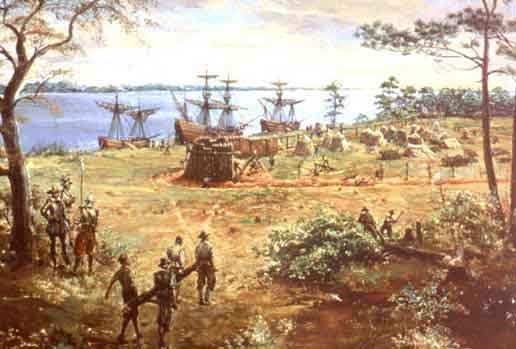 These were followed by expeditions by other European countries hoping to colonize other parts of the New Globe. Kingdom of spain sent expeditions starting time in the Appalachian Mountains all the way west to the Grand Canyon. Hernando De Soto and Francisco Vazquez de Coronado explored the residuum of the country in 1540. Coronado recruited native Mexican Americans to help in the exploration of the new world reaching the Arizona-Mexican border. St. Augustine in Florida had the commencement permanent settlement on the continent. Other Spanish settlements spread throughout the new borderland, these included places like nowadays day Albuquerque, Los Angeles, San Antonio, San Diego, Santa Fe, San Francisco, and even Tucson in Arizona.
These were followed by expeditions by other European countries hoping to colonize other parts of the New Globe. Kingdom of spain sent expeditions starting time in the Appalachian Mountains all the way west to the Grand Canyon. Hernando De Soto and Francisco Vazquez de Coronado explored the residuum of the country in 1540. Coronado recruited native Mexican Americans to help in the exploration of the new world reaching the Arizona-Mexican border. St. Augustine in Florida had the commencement permanent settlement on the continent. Other Spanish settlements spread throughout the new borderland, these included places like nowadays day Albuquerque, Los Angeles, San Antonio, San Diego, Santa Fe, San Francisco, and even Tucson in Arizona.
Inbound the 17th century, the Dutch claimed the territory that was found along the Hudson River Valley. French republic colonized much of Northward America between 1534 through 1763. Most of the French settlers made Quebec their home early on. Their main means of commerce was fur trading with Indian tribes who in turn became their allies against the British. France's territories were divided into 5 colonies, Acadia (role of present day Quebec), Canada, Hudson Bay, Louisiana, and Newfoundland.
Colonization by United kingdom
A little known fact virtually colonial America is that one-half of European immigrants, who came, arrived equally what was called "indentured servants." What this ways is that a person is contracted to work over a period of time determined past the employer, oftentimes in an unskilled capacity. The "retainer" in plough receives nutrient, lodging, clothing, and if necessary, transportation during their menstruum of service. No wages are paid to them. These often are men and women under 21 years of historic period.
In the year 1607, Jamestown, Virginia is where the English first established a colony, mainly a colony composed of businessmen and their families. Possibly the most famous story ever told virtually the colonization of America is that of the pilgrims and the mayflower. The pilgrims were composed of dissenters and separatists from England, all one hundred and ii passengers reached Plymouth harbor in 1620. Their original destination of the mayflower, the ship they were riding on, was the Hudson River; at that time was part of the Virginia colony.
Landmark events during British Colonization
Massachusetts Bay Colony, 1628 – English settlement established on the North American e coast in what is today Boston and Salem. The colony was financed by the Massachusetts Bay Visitor.
King Philip's State of war, 1675-1676 – Disharmonize using weapons between Native American Indians and the English language colonists and their allies. The opposing side was led by Metacomet, to whom the English gave the name King Philip.
Yamasee War, 1715-1717 – Attempt by Native American tribes to destroy the English settlers in South Carolina. The tribes included Apalachee, Apalachicola, Cherokee, Chickasaw, and the Yamasee, only to name a few.
The Nifty Enkindling, 1730s through 1740s – A religious revival that spanned across the Atlantic body of water that touched British America and protestant Europe. Preacher Jonathan Edwards gave the message to listeners their need for salvation through Jesus Christ. The Great Awakening allowed the people to personalize their faith, not through ceremony and rituals.
French and Indian State of war, 1754-1763 – as well known equally the Seven Years State of war. This was a conflict in North America between France and Great britain.
Boston Massacre, March 1770 – An event caused by the death of 5 colonial civilians past the firing of the muskets by British soldiers. It has also been referred to every bit the Boston Anarchism, and believed to take been a precursor to the American Revolutionary War.
Boston Tea Party, 1773 – Action taken confronting the East India Company and the British regime by colonists in Massachusetts. Three ships in the Boston harbor were boarded by colonists to dump the tea the ships were transporting into the harbor.
American Revolution 1775–1783 & Declaration of Independence
 The year 1775 saw the rebellion of the thirteen colonies against British rule. The Us was able to overcome the British forces through the aid of France and Spain. The continental congress made the Declaration of Independence signed on July 4, 1776. This became the rallying cry for the newly formed United States against the British government. The announcement and signing took place in Philadelphia. The ideals of this new nation were based on liberal enlightenment ideas and republican doctrine. Both ideals are dependent on ane some other. The liberal enlightenment is described past what the tertiary President of the United States and a principal drafter of the annunciation, Thomas Jefferson, as "…that all men are created equal, that they are endowed by their Creator with sure unalienable rights, that amidst these are Life, Liberty and the pursuit of Happiness."
The year 1775 saw the rebellion of the thirteen colonies against British rule. The Us was able to overcome the British forces through the aid of France and Spain. The continental congress made the Declaration of Independence signed on July 4, 1776. This became the rallying cry for the newly formed United States against the British government. The announcement and signing took place in Philadelphia. The ideals of this new nation were based on liberal enlightenment ideas and republican doctrine. Both ideals are dependent on ane some other. The liberal enlightenment is described past what the tertiary President of the United States and a principal drafter of the annunciation, Thomas Jefferson, as "…that all men are created equal, that they are endowed by their Creator with sure unalienable rights, that amidst these are Life, Liberty and the pursuit of Happiness."
Republicanism reflects these values written on the declaration stressing liberty and inalienable rights at the very core of this belief. This belief basically states that the people are sovereign, requiring civic duty, opposed elitism, and apprehensive towards corruption. They did non recognize the rule of kings based on heritage.
People have tried to identify who actually formed the words written in the announcement of independence; Thomas Jefferson explained in 1825 that the proclamation did not comprise anything original attributed to one man. Everything written on the certificate, include sentiments past those who supported the American Defection. At that place were 50-six signers on the Annunciation of Independence.
Mail service Revolutionary State of war
The American Revolutionary State of war ended in 1783. Immediately thereafter, a time of prosperity took place. The new national government addressed matters such as the western territories which somewhen became U.s.a. territories and became states beginning in 1791.
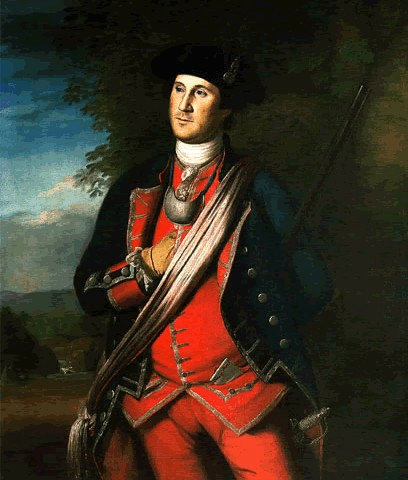 George Washington became the start president of the United States in 1789 under a new constitution. He ran for president as an independent. 1791 was the year that the United States Nib of Rights came into outcome. There had been many accomplishments that took place under the leadership of George Washington. Nether Washington, the establishment of a stable national government became a priority; this included the creation of the Bank of the United States which eventually helped the financial system. The inception of a taxation organization was introduced; the arrangement as well addressed tariffs for imports and other debts owed by the states.
George Washington became the start president of the United States in 1789 under a new constitution. He ran for president as an independent. 1791 was the year that the United States Nib of Rights came into outcome. There had been many accomplishments that took place under the leadership of George Washington. Nether Washington, the establishment of a stable national government became a priority; this included the creation of the Bank of the United States which eventually helped the financial system. The inception of a taxation organization was introduced; the arrangement as well addressed tariffs for imports and other debts owed by the states.
It was also during Washington's time as president that a new political political party was established, the Federalist Party, also known as the get-go American party. Federalists supported a fiscally sound and nationalistic blazon of authorities.
In 1794, the Jay Treaty was reached in which the United States, represented by George Washington and Alexander Hamilton, restored civil relations with the British. Jefferson supporters did non agree with this motility which led to voters giving their allegiance for one party or the other, creating the Beginning Party Organisation. Even though the treaty was signed, the birth of heated politics became prevalent.
Pregnant events and milestones after the American Revolution
Avoiding Slave Act, 1793 – Meant to protect property, in which slaves were considered. Any human being who captures or harms or fifty-fifty kills a slave will have to repay damages done to the slave.
Whiskey Rebellion, 1794 – Protest against federal taxes by settlers in several Pennsylvania counties located in the Allegheny Mountains
Alien and Sedition Acts, 1798 – Bills passed in 1798 by Federalists in an undeclared war with France.
Quasi-War, 1798 – 1800 – Undeclared war between France and the United States fought in the high seas. Too known equally Franco-American War and The Pirates State of war.
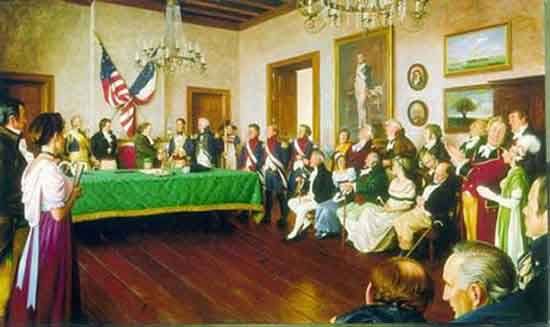 Louisiana Purchase, 1803 – The U.s. acquired Louisiana from French republic, who had a claim on the territory. The US paid $eleven,250,000 in add-on to cancelling $3,750,000 in debt past France.
Louisiana Purchase, 1803 – The U.s. acquired Louisiana from French republic, who had a claim on the territory. The US paid $eleven,250,000 in add-on to cancelling $3,750,000 in debt past France.
Chesapeake-Leopard Affair, 1807 – When a British warship, the HMS Leopard attacked an American vessel, the Chesapeake in which iii men died and eighteen people injured.
State of war of 1812, Conflict between the British Empire which included parts of present day Canada, and the USA.
Hartford Convention, December 1814 – January 1815 – Event marking the opposition of New England states confronting the War of 1812. The states had threatened to secede from the United states of america.
Battle of New Orleans, 1815 – Culmination of the War of 1812. Major General Andrew Jackson led American forces to defeat the British army who invaded trying to gain hold of New Orleans. Numerous Native Americans lost their lives during this battle; they had centrolineal themselves with the British.
Missouri Compromise, 1820 – This agreement was made to regulate slavery in western territories. Involved in the understanding were anti-slavery and pro-slavery camps.
Monroe Doctrine, 1823 – Introduced by President James Monroe, this is a policy issued by the United states of america alarm other European countries from making farther attempts to try and colonize or interfere with American states. Such attempts would be seen as an act of aggression. It is said that the words implied the Western Hemisphere.
Indian Removal Act, 1830 – Human activity signed past President Andrew Jackson leading to the moving of thousands of American Indians to the western states.
Texas Statehood, 1845 – The Democracy of Texas becomes the 28th state of the United States of America; this led to Mexican-American in 1846.
Mexican-American War, 1846 – 1848 – A result of the annexation of Texas to the United states of america in 1845. Consequence of the war was United mexican states giving up Alta California and New Mexico for $18 one thousand thousand dollars. Alta California was made upward of what are today, California, western Colorado, Nevada, Arizona, Utah, New Mexico, and southwestern Wyoming.
Treaty of Guadalupe Hidalgo, February 1848 – Treaty for peace every bit dictated by the United States after the surrender of United mexican states.
Civil State of war 1849-1865
 The 19th century was supposed to exist a time of reconciliation for the young Usa of America. They were supposed to atomic number 26 out their differences in their approaches towards authorities, economic science, societal matters, and slavery. Before long after the election of Abraham Lincoln in 1860, the confederate states of America had been formed. These were composed of eleven southern states. Alabama, Florida, Georgia, Louisiana, Mississippi, South Carolina, and Texas had seceded before President Lincoln took the adjuration of office in 1861. Arkansas, North Carolina, Tennessee, and Virginia followed soon and declared their secession from the union afterwards amalgamated soldiers attacked Southward Carolina'southward Fort Sumter in Apr of 1861.
The 19th century was supposed to exist a time of reconciliation for the young Usa of America. They were supposed to atomic number 26 out their differences in their approaches towards authorities, economic science, societal matters, and slavery. Before long after the election of Abraham Lincoln in 1860, the confederate states of America had been formed. These were composed of eleven southern states. Alabama, Florida, Georgia, Louisiana, Mississippi, South Carolina, and Texas had seceded before President Lincoln took the adjuration of office in 1861. Arkansas, North Carolina, Tennessee, and Virginia followed soon and declared their secession from the union afterwards amalgamated soldiers attacked Southward Carolina'southward Fort Sumter in Apr of 1861.
After the attack on the fort, Lincoln ordered union soldiers from the unlike states to protect the capital, recapture the forts, and "preserve the Union." The war was fought in two seats of war, or theater, the eastern and the western. Virginia and West Virginia led by General Robert E. Lee, representing the Confederates, fought against the District of Columbia, Maryland, and Pennsylvania battled in the eastern theater wherein the Union experienced defeat early during the campaign.
Battles of the Civil War
Outset Battle of Balderdash Run, July 21, 1861 – The confederates chosen this the First Boxing of Manassas; it was the showtime land battle of major proportions in the Ceremonious War. The battle took place on July 1861 nearly the urban center of Manassas in Prince William Canton, Virginia.
Peninsular Campaign, March-July 1862 – The Unions showtime big scale offensive in the Eastern theater which was commanded by George B. McClellan. The operation involved 121,500 men, 15,000 horses, 1,150 wagons, 44 artillery batteries and tons of supplies and equipment.
Second Boxing of Bull Run, August 1862 – At that place were 62,000 Matrimony soldiers when the battle started, x,000 were killed and wounded. The Amalgamated had 50,000 out of whom 1,300 were killed and 7,000 wounded.
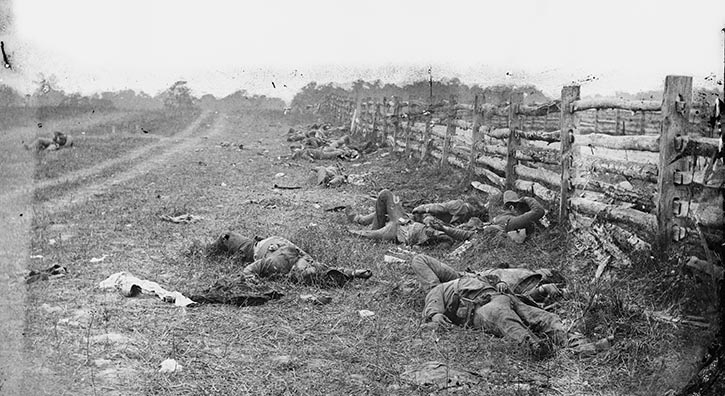 Boxing of Antietam, September 1862 – This boxing was fought near Sharpsburg, Maryland and the Antietam Creek. It is considered the bloodiest 1 twenty-four hours boxing of the Civil State of war; there were 23,000 casualties from both sides.
Boxing of Antietam, September 1862 – This boxing was fought near Sharpsburg, Maryland and the Antietam Creek. It is considered the bloodiest 1 twenty-four hours boxing of the Civil State of war; there were 23,000 casualties from both sides.
Boxing of Perryville, Oct 1862 – This battle took identify in Chaplin Hills which is w of Perryville, Kentucky. It has also been called equally the Battle of Chaplin Hills.
Battle of Fredericksburg, December eleven-15, 1862 – Fought in Fredericksburg, Virginia between the forces of General Robert East. Lee'south North Virginia Confederate Army and Major General Ambrose E. Burnside'south Union Regular army of the Potomac. There were 12,653 casualties with 1,284 killed on the Marriage side; the Confederate ground forces had lost v,377, 608 killed.
Battle of Chancellorsville, April-May 1863 – A major battle in the Ceremonious War that took place in Spotsylvania County, Virginia. Despite a Amalgamated victory, it was dampened by the loss of Lt. General Thomas J. "Stonewall" Jackson, General Lee'south right hand man.
Siege of Vicksburg, May-July 1863 – Army of the Tennessee led by Ulysses Due south. Grant drives Lt. General John Pemberton and his confederate forces back to their defensive lines in Vicksburg, Virginia.
Battle of Gettysburg, July 1863 – Fought in and around the town of Gettysburg, Virginia, this battle had claimed the about number of casualties during the Civil War. An approximate total of
165,620 Americans fought at this battle over a iii mean solar day menses. There were a total of 7,863 that were killed.
Battle of the Wilderness, May 1864 – The battle pitted Ulysses South. Grant and Robert E. Lee. This was literally a battle of wits, one general trying to outsmart the other. Estimates say casualty estimates reach 30,000 from both sides.
Battle of Spotsylvania, May 1864 – Part of the Overland Campaign, the battle represented another example of the fierceness of the Civil War. Total casualties numbered at 32,000. Again, Full general Lee had the upper-hand during the skirmishes.
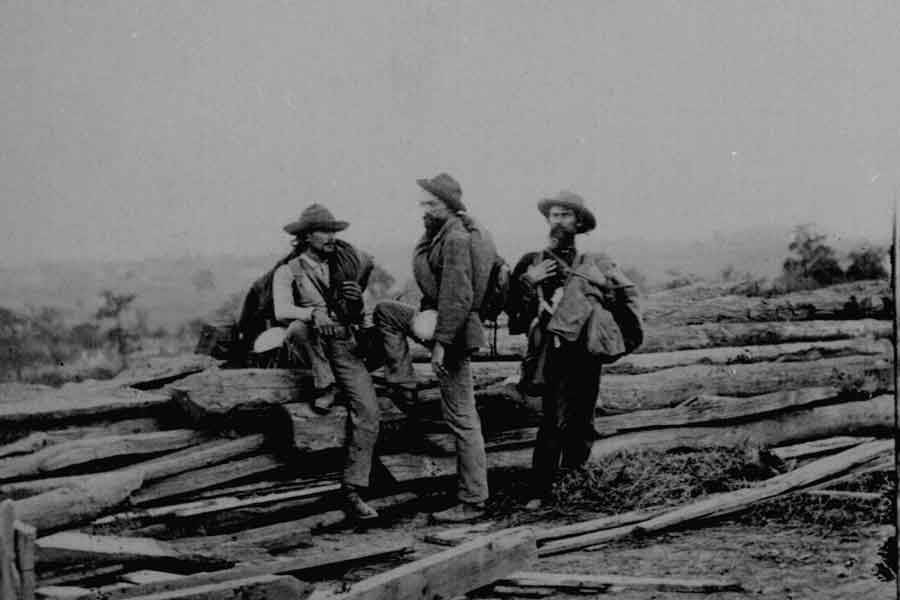 Appomattox Campaign, March-Apr 1865 – Described as an array of battles in Virginia that were fought betwixt the end of March 1865 and early April 1865. It is seen as the campaign that led to the eventual give up of the Army of Northern Virginia and thus leading to the stop of the civil war.
Appomattox Campaign, March-Apr 1865 – Described as an array of battles in Virginia that were fought betwixt the end of March 1865 and early April 1865. It is seen as the campaign that led to the eventual give up of the Army of Northern Virginia and thus leading to the stop of the civil war.
The Civil War not just cost money, but more than anything, it cost lives. This was the deadliest state of war in the history of the United States. Eight percent of white males between the ages of 13 and 43 was said to take died in the war; in addition, xviii percent in the south and most six percent in the Due north of males died.
Reconstruction
In the years that followed the Civil War, a period of reconstruction took place. Among the changes that took place was the expansion of ceremonious rights for black Americans through the passing of the "Reconstruction Amendments." Significant amidst the amendments passed were the 13th (outlawed slavery), 14th (gave citizenship for all people either born or naturalized on U.Due south. territory), and 15th (gave men the correct to vote no affair what their race is) amendments.
In response to the new amendments in reconstruction, a group of people opposed to the advancement of black civil rights formed a group to testify their opposition, the KKK, meliorate known as the Ku Klux Klan. The reconstruction era allowed the south to be governed by the military and corruption.
Aureate Age of Marker Twain
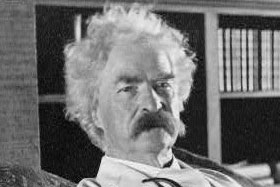 Samuel Clemens, meliorate known every bit Marker Twain called the years that ended the 19th century and post civil war years as the "Gilt Historic period." This was a time when the population grew and economic science boomed in the United States. In 1890, production and earnings by Americans exceeded those of their counterparts in other countries. This was likewise a time wherein immigrants from Europe were immune in to make up the workforce needed, thus creating a diversity that has been a trademark of the American culture. Twenty-two meg people migrated to the United states between 1880 through 1914.
Samuel Clemens, meliorate known every bit Marker Twain called the years that ended the 19th century and post civil war years as the "Gilt Historic period." This was a time when the population grew and economic science boomed in the United States. In 1890, production and earnings by Americans exceeded those of their counterparts in other countries. This was likewise a time wherein immigrants from Europe were immune in to make up the workforce needed, thus creating a diversity that has been a trademark of the American culture. Twenty-two meg people migrated to the United states between 1880 through 1914.
The years that followed saw the introduction of the labor motion. The ascent in prominence of industrial leaders such equally John D. Rockefeller in the oil industry and Andrew Carnegie in the steel industry became evident.
Economics was not the simply area the U.s. was beingness transformed. This menstruation is also recognized as the "progressive era." A time wherein social reform and activism dominated the political mural. This was a time wherein prohibition became the governments scourge, a fourth dimension where women's suffrage became the most discussed topic in the halls of authorities. Anti-trust laws, regulation of various industries, and the addition four new amendments to the constitution were topics discussed at the local barber shop.
The women's movement had its ancestry equally early as 1848, but did not get plenty steam until after the civil war. Among its earliest leaders included Susan B. Anthony, Elizabeth Stanton, and Lucretia Mott. The annunciation of sentiments was instrumental in pushing the "beginning-wave of feminism" in the limelight. Nearly western states had given women total voting rights toward the cease of the 19th century in addition to other legal matters which included property and custody of children. By 1912, the movement had grown which brought it once again into the national spotlight leading to the drafting of the 19th amendment which was ratified in august 1920; the amendment prohibits "any citizen of the u.s. to exist denied the correct to vote based on sex."
Imperialism
 With its domestic scene growing economically and socially, expansion was next on the agenda for America late in the 19th century and into the early 20th century. The Spanish-American war was the master event when it came to symbolizing American imperialism. The Philippines, Guam, and Puerto Rico had been acquired by the United States during the Treaty of Paris. There were those in the halls of congress that opposed America's pace towards imperialism. America staved off attempts of Filipino nationalists in 1902 in a war that began in 1898, this was known as the Philippine-American State of war. Eventually, the Americans lost involvement in these pacific islands in 1908, their attention was diverted to places closer to home, the Caribbean, specifically the Panama Canal.
With its domestic scene growing economically and socially, expansion was next on the agenda for America late in the 19th century and into the early 20th century. The Spanish-American war was the master event when it came to symbolizing American imperialism. The Philippines, Guam, and Puerto Rico had been acquired by the United States during the Treaty of Paris. There were those in the halls of congress that opposed America's pace towards imperialism. America staved off attempts of Filipino nationalists in 1902 in a war that began in 1898, this was known as the Philippine-American State of war. Eventually, the Americans lost involvement in these pacific islands in 1908, their attention was diverted to places closer to home, the Caribbean, specifically the Panama Canal.
World State of war I
America maintained a position of neutrality while Earth War I raged in Europe. The entry of the U.s. into 1st Globe War did not take place until 1917 when a disagreement emerged with Germany regarding the use of submarines. The entry of the United States into this state of war led to the creation of the selected services act in which nearly three million men had been drafted. This enabled the Usa to send ten g soldiers daily to the battlefront in France.
1918-1945
Towards the end of the First Globe War, the United States gained stature militarily and economically. They were recognized as a world power. The United states did not accede to signing the Treaty of Versailles, and in doing so earned the reputation of being isolationists. The revolution in Russia sent shockwaves throughout America, the fear of communism became real to people of the United states of america and what it would practice to their way of life.
The 1920s was perhaps the well-nigh decadent period in the history of the United States, rivaled only later by the 1960s. This was a period whose ripple furnishings can still be felt to this 24-hour interval. A period wherein; prohibition was the topic of chat; the reformation of the KKK in which upward to four 1000000 members were counted past the year 1924; the Immigration Act of 1924 was passed, this act limited the number of people who would be admitted as immigrants; and the nascency of the Jazz age gave the youth of that decade something to talk about.
 Despite a "roaring" start to the 1920s, the United States was non able to sustain the roar. Past October of 1929, the stock market crashed. A worldwide depression ensued leading to what is known equally the Slap-up Low. Between 1929 and 1933, almost 25 percent unemployment was experienced in the United States. Almost every industry, especially in manufacturing, had reached a point where in their output had been reduced to ane-3rd.
Despite a "roaring" start to the 1920s, the United States was non able to sustain the roar. Past October of 1929, the stock market crashed. A worldwide depression ensued leading to what is known equally the Slap-up Low. Between 1929 and 1933, almost 25 percent unemployment was experienced in the United States. Almost every industry, especially in manufacturing, had reached a point where in their output had been reduced to ane-3rd.
As in previous challenges, the Americans would not let something like the Groovy Low proceed them down. Franklin D. Roosevelt campaigned in 1932 that he had "new deal" for America. What this period represented was the introduction of entitlement programs that gave fashion to new ways to spend taxpayers' money and requite certain social programs a voice in the halls of congress. The Social Security Human action, the Economy Act Works Progress Administration, and the Emergency Banking Human action, had all been part of President Roosevelt'southward "new deal."
Globe War II
 While the United States and the rest of the world were dealing with their economical woes, Europe was being besieged past the rumblings from Nazi Germany and Fascists from Italy, and that of imperial Nippon flexing their muscles in East asia. The French and the British continued to exercise appeasement to avert war throughout Europe. The United States passed legislation that was meant to foreclose America from getting involved with conflicts outside their shores; this slice of legislation is known as the Neutrality Acts.
While the United States and the rest of the world were dealing with their economical woes, Europe was being besieged past the rumblings from Nazi Germany and Fascists from Italy, and that of imperial Nippon flexing their muscles in East asia. The French and the British continued to exercise appeasement to avert war throughout Europe. The United States passed legislation that was meant to foreclose America from getting involved with conflicts outside their shores; this slice of legislation is known as the Neutrality Acts.
This changed when Deutschland invaded Poland in 1939; this was the starting time of Earth State of war Ii. President Roosevelt called the U.Southward. the arsenal of democracy, promising financial and supplies, in the form of munitions, in support of the Allies in Europe. No troop support was promised. In an endeavour to keep the United States from exercising their ability in the pacific, in Dec 8, 1941, Nihon attacked Pearl Harbor. This pushed the United States into the fracas, motivated by revenge.
Primarily, the Allies were composed of United kingdom, China, the Soviet Union, the United States, and other countries similar Australia, Belgium, Canada, Brazil, New Zealand and more. These fought the forces of Deutschland, Italy, and Nippon which had been known as the Axis powers.
During the state of war, the economy of the United States improved. The State of war Production Board of FDR helped take the economic system out of the doldrums of the Great Low. Full time employment suddenly became a reality and not just wishful thinking. A majority of the labor force in America had a role to play during the wartime efforts, including black people and women.
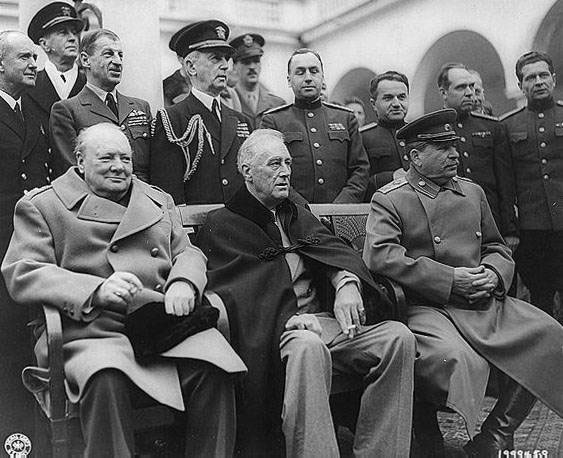 With the eventual victory of the allies over the axis of powers, some other kind of war brewed behind the scenes amongst the nations. The United States' position afterward the war made them a superpower and by a bipartisan vote decided to join the United Nations. The significance of this action is that this is the first fourth dimension the United States has broken from their long held tradition of acting unilateral, or beingness isolationists.
With the eventual victory of the allies over the axis of powers, some other kind of war brewed behind the scenes amongst the nations. The United States' position afterward the war made them a superpower and by a bipartisan vote decided to join the United Nations. The significance of this action is that this is the first fourth dimension the United States has broken from their long held tradition of acting unilateral, or beingness isolationists.
The underlying reason for the move may have been an attempt to forestall the dreaded expansion of communism throughout Europe by the Soviets. The united states of america in 1949 formed the NATO (North Atlantic Treaty Arrangement) which was meant to safeguard countries from unwarranted attacks (from the Soviet Union specifically) from other countries. An assail on one member of NATO would be considered an attack on all members. Members of NATO included the United kingdom, the USA, Italia, France, Iceland, Canada, Portugal, and other signatories of the Northward Atlantic Treaty. Other countries later joined the system. In response to NATO, the Soviet Union put together the Warsaw pact which was a compilation of other communist states in Eastern Europe. Thus the Common cold War had its beginnings.
The Cold War
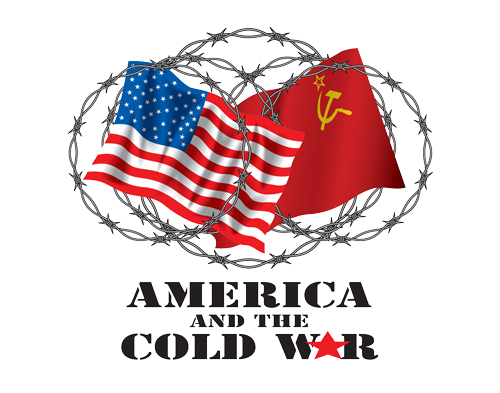 The years following the Globe War II gave birth to events we often hear from the history books and the history channel. Cold war battles were fought through proxy wars which includes the Korean War in 1950 and the Vietnam War in 1955. In a boxing for supremacy in the area of technology and innovation, the United States officially joined the Space Race in 1957 afterward information technology saw the progress the soviets had made.
The years following the Globe War II gave birth to events we often hear from the history books and the history channel. Cold war battles were fought through proxy wars which includes the Korean War in 1950 and the Vietnam War in 1955. In a boxing for supremacy in the area of technology and innovation, the United States officially joined the Space Race in 1957 afterward information technology saw the progress the soviets had made.
The United States influenced the balance of the world in all aspects of everyday life non just economically, but likewise applied science, politically, militarily, socially, and culturally. The 1960 elections saw the rise of John Fitzgerald Kennedy into the political arena. Considered a charismatic politician, President Kennedy institute himself faced with international conflicts at perhaps what could be called the top of the cold war. Robert F Kennedy, brother of JFK, equally office of the cabinet, was named chaser general.
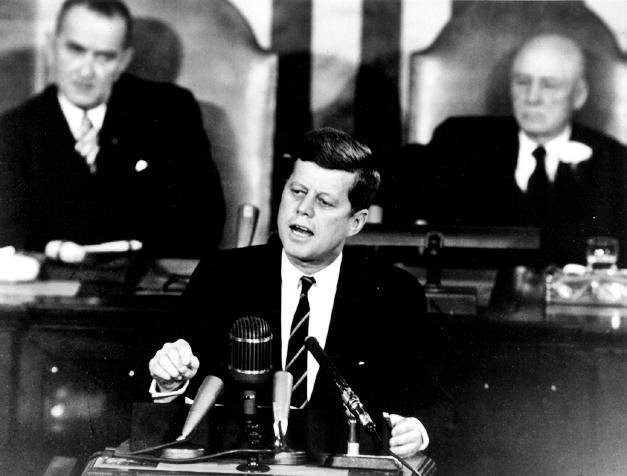 During his brief three years in role as the US President, John F Kennedy faced: the growing office of the U.s. in the Vietnam war; the The states drive to winning the Infinite Race; the Bay of Pigs invasion; Cuban missile crunch; the civil rights movement, highlighted past the jailing of Martin Luther King Jr. President Kennedy was assassinated on Nov 22, 1963 during a visit to Dallas, Texas.
During his brief three years in role as the US President, John F Kennedy faced: the growing office of the U.s. in the Vietnam war; the The states drive to winning the Infinite Race; the Bay of Pigs invasion; Cuban missile crunch; the civil rights movement, highlighted past the jailing of Martin Luther King Jr. President Kennedy was assassinated on Nov 22, 1963 during a visit to Dallas, Texas.
Liberalism and Social Activism
As Lyndon B. Johnson took the oath of part after the bump-off of President Kennedy. Johnson introduced and passed through congress what was so known equally the Great Lodge programs. The programs included the end of segregation, civil rights, Medicare, federal assistance for teaching, the extension of welfare benefits, simply to name a few. This menses has historically been seen as the rise of liberalism in America.
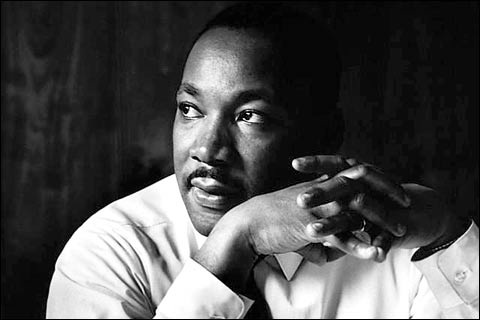 The civil rights movement continued to gain traction, just at a cost. Those from the south opposed this new threat to their way of life. It has been said that institutional racism swept across in many parts of America. Leaders in the movement were led by the likes of Martin Luther King, Jr. and Rosa Parks. The women's motility too institute an audience, not just in the shores of America, but throughout the world. The continuing push for women'south rights coincided with the civil rights motion. Names that stand out in the women's rights movement included Betty Friedan and Gloria Steinem.
The civil rights movement continued to gain traction, just at a cost. Those from the south opposed this new threat to their way of life. It has been said that institutional racism swept across in many parts of America. Leaders in the movement were led by the likes of Martin Luther King, Jr. and Rosa Parks. The women's motility too institute an audience, not just in the shores of America, but throughout the world. The continuing push for women'south rights coincided with the civil rights motion. Names that stand out in the women's rights movement included Betty Friedan and Gloria Steinem.
While judicial activism past the warren court, social programs doling out money, the United States was fighting two wars internationally the Cold War and the Vietnam War. Social boundaries, feminism, environmental issues, civil rights all became a political force of its own. Many of what was previously accepted as the norm, was being dismissed by the prevailing social and political wind. The Counterculture Movement of the early on 1950s into the mid 1970s paved the fashion events such as the hippie movement, sexual activity, drugs, Woodstock, the Oil Embargo in 1973 by OPEC, and of course, Watergate.
The 70s
In 1969, Richard Millhouse Nixon was elected as the president of the United States. He was after replaced past his vice-president Gerald Ford in 1974 after resigning from the role of the president due to his involvement in the Watergate scandal. 1976 saw the ballot of Jimmy Carter, whose campaign appeal was that he had been a peanut farmer. Carter helped in bringing together Israel and Egypt to the table in what is known every bit the Camp David Accords. Towards the stop of his term in office, carter was faced with some other crunch in the middle e, hostages, American hostages were taken by Iranians in Tehran. This event left the rest of the earth at a standstill,waiting to come across what the Americans would practise. The Islamic republic of iran hostage crunch became history, and the reason for Jimmy Carter's one term presidency.
80s
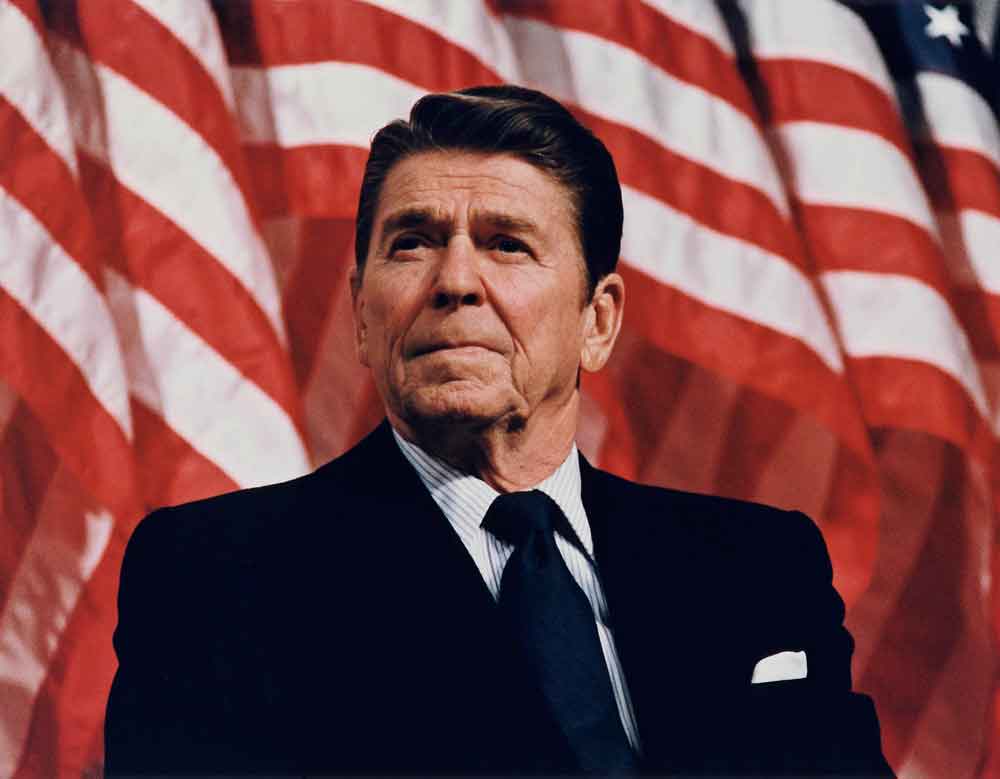 Ronald Wilson Reagan became the 40th president during a landslide victory in 1980. President Reagan served two terms in which he implemented was has been known every bit Reaganomics through the Economic Recovery Tax Act of 1981 in which income taxes were lowered from a loftier of seventy percent taking it downwardly over seven years to 28%. Reagan once more reinforced the might of the American war machine past supporting a build-up in every department of the war machine. He also introduced a missile defence force system , the Strategic Defense Initiative. Ronald Reagan ensured the military strength of the Us would not be trifled with, he helped amend the economic condition of the nation over the years he was in function, and he stood toe-to-toe against the Soviet Union. The actions he took late in his presidency led to the end of the cold War.
Ronald Wilson Reagan became the 40th president during a landslide victory in 1980. President Reagan served two terms in which he implemented was has been known every bit Reaganomics through the Economic Recovery Tax Act of 1981 in which income taxes were lowered from a loftier of seventy percent taking it downwardly over seven years to 28%. Reagan once more reinforced the might of the American war machine past supporting a build-up in every department of the war machine. He also introduced a missile defence force system , the Strategic Defense Initiative. Ronald Reagan ensured the military strength of the Us would not be trifled with, he helped amend the economic condition of the nation over the years he was in function, and he stood toe-to-toe against the Soviet Union. The actions he took late in his presidency led to the end of the cold War.
World Superpower 1991 – present
The stop of the Cold War had been punctuated by the fall of the Berlin Wall in 1989 leading to the eventual collapse of the Soviet Union. Ronald Reagan paved the way in a speech he gave in 1987 in which he challenged Mikhail Gorbachev, the Soviet Leader at the time, "General Secretary Gorbachev, if y'all seek peace, if you seek prosperity for the Soviet Matrimony and Eastern Europe, if you seek liberalization, come here to this gate! Mr. Gorbachev, open up this gate! Mr. Gorbachev, tear downward this wall!"
When Ronald Reagan left office after two terms, George Herbert Walker Bush was elected president afterwards serving equally Vice-President to Reagan.
Desert Storm
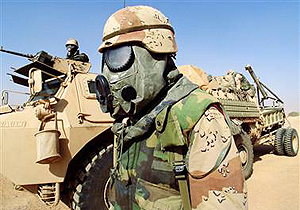 The world saw the interruption-up of the Soviet Union in 1991, which left the United States as simply remaining superpower in the globe. It made them the sole monitor in the affairs of the rest of the earth. 1990 also marked the involvement of the United States in what was known equally the Persian Gulf State of war.
The world saw the interruption-up of the Soviet Union in 1991, which left the United States as simply remaining superpower in the globe. It made them the sole monitor in the affairs of the rest of the earth. 1990 also marked the involvement of the United States in what was known equally the Persian Gulf State of war.
This was a war in which the United Nations authorized a coalition from 34 nations to wage war confronting then Iraqi president Saddam Hussein. The United States led the coalition forces to boxing against the Iraqi forces in its invasion and endeavour to annex Kuwait, an Arab country. Many accept referred to this U.s.a. led armed services response as "Functioning Desert Storm," others called information technology "the Mother of All Battles."
Into the 21st Century
During the 1992 elections, William "Beak" Jefferson Clinton won the presidential elections chirapsia George H.W. Bush. The Clinton years had its ups downs economically and politically. This period also saw the arrival of the digital revolution wherein the "dotcom" era created past the introduction of the cyberspace, provided economical opportunities in the U.Due south.
Political turmoil vicious on the Clinton administration when Bill Clinton was impeached past the House of Representatives for lying about a sexual relationship he had with an intern, he was charged of "high crimes and misdemeanors."
Some other Bush
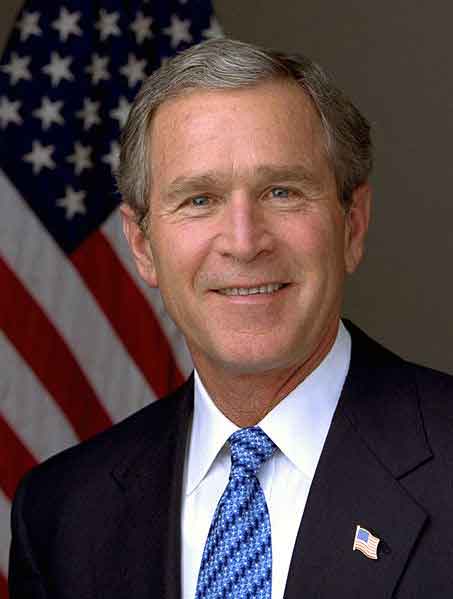 The 21st century was ushered in by a tightly contested election in November 2000, when George Walker Bush (son of George H.W.) crush out Democratic candidate Al Gore by the slimmest of margins. The results went through numerous legal hurdles before the U.S. Supreme Court stepped in. The recount showed Bush ahead when the U.S. Supreme Court determined to halt the recount.
The 21st century was ushered in by a tightly contested election in November 2000, when George Walker Bush (son of George H.W.) crush out Democratic candidate Al Gore by the slimmest of margins. The results went through numerous legal hurdles before the U.S. Supreme Court stepped in. The recount showed Bush ahead when the U.S. Supreme Court determined to halt the recount.
In his commencement yr in office, months afterwards he took the oath of office, George W. Bush and the people of the United States saw a new war fall on their shores. The morning of September xi, 2001, the American people were rudely awakened by two hijacked airliners being flown into the two towers of the World Trade Center in New York Urban center. The planes were piloted past al-Qaeda terrorists. Two other planes were seized past members of the same terrorist grouping; 1 was flown into the Pentagon in the Arlington, Virginia countryside, the fourth plane was crashed in the fields of rural Pennsylvania, in the metropolis of Shanksville. The fourth aeroplane was believed to have been headed for the white house or the capitol building in Washington D.C.
 More than 3,000 people died that morning time of September 11, 2001. President George West. Bush declared a "State of war on Terror." The The states and its NATO allies proceeded to invade the country of Afghanistan, who at that time was believed to exist ruled past the Taliban who provided refuge for al-Qaeda members and its leader, Osama Bin Laden. The United States launched another invasion in the middle-east; this one was known every bit "the invasion of Iraq," against a familiar foe in Saddam Hussein. It was believed that Hussein possessed "weapons of mass destruction."
More than 3,000 people died that morning time of September 11, 2001. President George West. Bush declared a "State of war on Terror." The The states and its NATO allies proceeded to invade the country of Afghanistan, who at that time was believed to exist ruled past the Taliban who provided refuge for al-Qaeda members and its leader, Osama Bin Laden. The United States launched another invasion in the middle-east; this one was known every bit "the invasion of Iraq," against a familiar foe in Saddam Hussein. It was believed that Hussein possessed "weapons of mass destruction."
During the early on days of the war in Iraq, the United States were met with resistance from non only from those loyal to Hussein, but likewise from combatants from anti-American factions from the middle-e. Some Americans were against the war in Republic of iraq. This produced a different kind of opposition to the war, although at closer await, volition remind you of that seen during the Vietnam War era. Although Bush was re-elected in 2004, he became unpopular because of the invasion of Iraq.
Past the year 2007, the United States and many parts of Europe began to experience a recession that had not been seen since the early 1930s. Every aspect of the American economy has been affected, fifty-fifty to this twenty-four hour period. Different industries were afflicted, the housing market, the automotive industry, to mention a few; there was also the crisis of rising unemployment, the rising of oil prices, and all this has led to a devastating financial crisis the Americans had seen since the Great Low.
Milestone
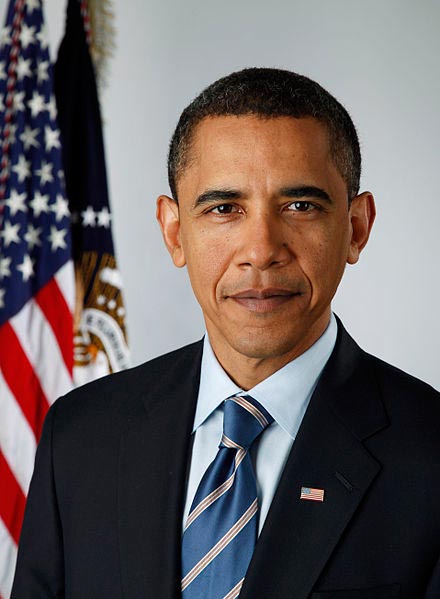 This financial crunch ushered the 2008 elections in which Barack Hussein Obama was voted as the 44th President of the Us (POTUS). Once he took office, Obama provided a $787 billion economic stimulus packet in hopes of helping give the economy a boost. This included bond out assistance to General Motors and Chrysler, a move meant to alleviate the crisis from completely engulfing the automotive manufacture.
This financial crunch ushered the 2008 elections in which Barack Hussein Obama was voted as the 44th President of the Us (POTUS). Once he took office, Obama provided a $787 billion economic stimulus packet in hopes of helping give the economy a boost. This included bond out assistance to General Motors and Chrysler, a move meant to alleviate the crisis from completely engulfing the automotive manufacture.
To date, the U.s.a. is in debt for $xiv.three trillion dollars. The debt owed by the United States includes well-nigh 5 trillion to China and other countries. The young nation continues to face up challenges, part of its growing pains.
The unemployment rate sits at or in a higher place 12 pct going into the yr 2011. In November 2010, voters made known their displeasure on how the current assistants and the Democratic Party had been handling the crunch. Some other group, the Tea Party movement, rose to prominence in 2009; they are pop conservative arm that most Americans are representative of. They are non a new party, merely a drove of like minded elected officials who are more than interested in the reality than the political inclinations Capitol Colina is known for.
They used the power of the vote to limited their displeasure by electing members of the other party, Republicans and a few independents, to represent them. In the month of May 2011, a threat of a government shutdown loomed due to the lack of a upkeep for the year. This would have meant that all sectors of the national authorities, with the exception of the military, would not exist able to run across their payroll. Leadership from the House of Representatives and the Senate met with Obama to try and come up up with an equitable solution that all sides could agree to. Fortunately, the shutdown was averted. Just because information technology was averted, does not mean the nation is out of the forest with continuing financial crisis.
The federal budget needs to exist addressed, the issue of healthcare reform remains an ugly specter hanging in the midst of those politicians in Washington D.C, and in that location are many domestic matters the U.s. needed to face up. In addition, the crunch in Egypt, Libya, Transitional islamic state of afghanistan, Syria and Israel, remain at the forefront of United states strange policy. The i high note for the U.s. is the killing of al-Qaeda leader Osama bin laden in May 2011 under the orders of President Obama.
Like I said at the beginning, the story of the United States is still being written, merely history students in the future will make a concluding determination. Whether the United states "returns to it start love," sit back, relax, and we shall soon see.
Source: https://totallyhistory.com/us-history/
Posted by: spragueyoudiven.blogspot.com


0 Response to "How Did Sea Travel Change European Nations In The 17th Century?"
Post a Comment